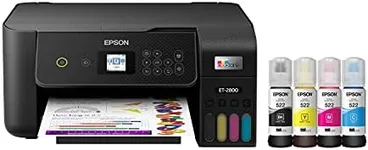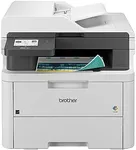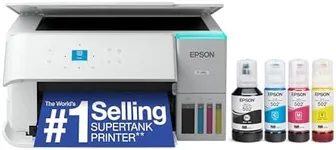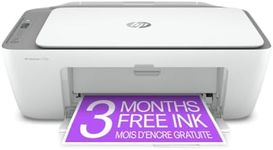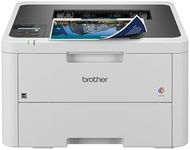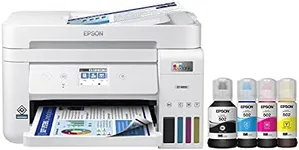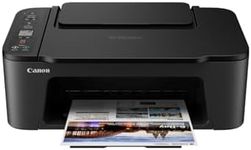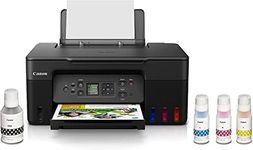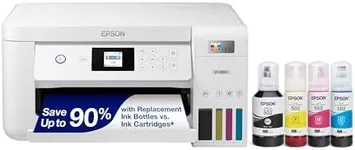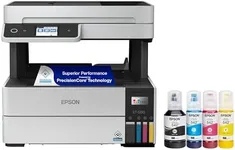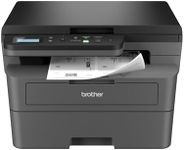Buying Guide for the Best Printer For Home
Choosing a printer for home use can feel overwhelming with so many options available, but focusing on your actual needs makes the process much easier. Start by thinking about what you’ll print most often—documents, photos, or both. Consider how much space you have, how often you’ll use the printer, and whether you want extra features like scanning or wireless printing. By understanding the key specifications, you can confidently select a printer that fits your lifestyle and printing habits.Printer Type (Inkjet vs. Laser)The type of printer is one of the most important decisions. Inkjet printers are versatile and great for printing both color documents and photos, making them ideal for families or creative projects. Laser printers, on the other hand, are better for high-volume black-and-white document printing and are usually faster and more cost-effective for text-heavy tasks. If you mostly print photos or occasional color pages, inkjet is a good choice. If you print lots of text documents, a laser printer might be better.
Print Quality (DPI)DPI stands for dots per inch and measures how detailed the printouts will be. Higher DPI means sharper and more detailed images, which is important for photos or graphics. For basic document printing, a lower DPI is usually sufficient. If you plan to print high-quality photos, look for a higher DPI. For everyday documents, a standard DPI will do the job.
Print Speed (PPM)Print speed is measured in pages per minute (PPM) and tells you how quickly the printer can produce pages. If you only print occasionally, speed may not matter much. However, if you often print large documents or multiple pages at once, a higher PPM can save you time. Think about your patience and how often you’ll need to print in a hurry.
Connectivity OptionsConnectivity refers to how you connect your devices to the printer. Common options include USB, Wi-Fi, Bluetooth, and sometimes Ethernet. Wireless options like Wi-Fi and Bluetooth are convenient for printing from laptops, phones, or tablets without needing to plug in. If you want to print from multiple devices or from anywhere in your home, look for a printer with strong wireless features.
All-in-One FunctionalitySome printers are just printers, while others are all-in-one devices that can also scan, copy, and sometimes fax. If you need to scan documents, make copies, or occasionally fax, an all-in-one printer is a good choice. If you only need to print, a basic printer will be simpler and may take up less space.
Ink or Toner Cost and AvailabilityThe ongoing cost of ink or toner can add up over time. Some printers use cartridges that are more expensive or harder to find. Consider how often you’ll need to replace ink or toner and check if the cartridges are easy to buy. If you print a lot, look for printers with high-yield cartridges or refillable tanks to save money and reduce hassle.
Paper Handling and SizePaper handling includes the types and sizes of paper the printer can use, as well as how much paper it can hold at once. If you print on different paper sizes or need to print envelopes, labels, or photos, make sure the printer supports those. For regular home use, a standard paper tray is usually enough, but if you print a lot, a larger tray can be convenient.
Size and DesignPrinters come in various sizes and designs. If you have limited space, look for a compact model that fits easily on a desk or shelf. Consider where you’ll place the printer and whether you need it to blend in with your home decor. A smaller, quieter printer may be better for shared spaces.

